Reminiscing
 Most people have heard of Ludwig van Beethoven, whether they like his music or not. Most people also know that Beethoven was a deaf musician. I think many people think he was born deaf, but that makes no sense. If he had been born deaf, why would he have ever been interested in music? You really don’t desire to play music that you cannot hear. I don’t think that the mind of a child born deaf would simply have no concept of sound…much less music. Of course, these days, more can be done restore hearing than in Beethoven’s time, but even now, I don’t know if hearing could be restored to someone who was completely deaf from birth.
Most people have heard of Ludwig van Beethoven, whether they like his music or not. Most people also know that Beethoven was a deaf musician. I think many people think he was born deaf, but that makes no sense. If he had been born deaf, why would he have ever been interested in music? You really don’t desire to play music that you cannot hear. I don’t think that the mind of a child born deaf would simply have no concept of sound…much less music. Of course, these days, more can be done restore hearing than in Beethoven’s time, but even now, I don’t know if hearing could be restored to someone who was completely deaf from birth.
As a young man, with normal hearing, Beethoven became interested in music, and proved to be a musical genius. His hearing began to go in his 20s, and I have no doubt that it was a devastating event for him. Imagine being a man with a love of music, suddenly realizing that there will come a day when he can no longer hear the music he loves. Beethoven began to try to figure out a way to continue to have the music he loved, and he came up with a way to play the piano and “hear” the way  his music sounded…vibrations. Vibrations, you say!! Yes!! Beethoven began to experiment on what vibrations occurred when each note was placed. I find that amazing. To be able to distinguish between the vibration B-flat makes as opposed to F-sharp. Any musician can easily tell you which note is which, but could they explain the vibration each one makes. I seriously doubt it.
his music sounded…vibrations. Vibrations, you say!! Yes!! Beethoven began to experiment on what vibrations occurred when each note was placed. I find that amazing. To be able to distinguish between the vibration B-flat makes as opposed to F-sharp. Any musician can easily tell you which note is which, but could they explain the vibration each one makes. I seriously doubt it.
Beethoven not only learned to distinguish the vibrations for each note, but he could quickly put them together in an order that made music that was truly beautiful. No sour notes in his music. No, his music was perfection, but exactly how did he do it. Well, he replicated “hearing” using vibrations by attaching a small rod to the piano and biting down on it while he played. Because our eardrums vibrate from sound, the vibration on Beethoven’s jaw imitated hearing while he was hearing impaired. Totally amazing!! This experiment was the start to the official alternate hearing method called bone conduction. And now you know where some of our greatest innovations in hearing came from.

 When we think of language, we think of a way to communicate, but we never really think of…safety. Why would we? After all, language is just communication, and can’t cause violence…can it? Well, it can, and never was that made more obvious than during the early 1800s, when Napoleon Bonapart’s French Army was involved in a war. At night, the soldiers would have a few minutes to read letters from home, but to do so, they had to turn on a lantern. Unfortunately, when the lanterns were turned on, the men became targets. Napoleon needed to find a way to allow his men to receive news from home, while also keeping them safe.
When we think of language, we think of a way to communicate, but we never really think of…safety. Why would we? After all, language is just communication, and can’t cause violence…can it? Well, it can, and never was that made more obvious than during the early 1800s, when Napoleon Bonapart’s French Army was involved in a war. At night, the soldiers would have a few minutes to read letters from home, but to do so, they had to turn on a lantern. Unfortunately, when the lanterns were turned on, the men became targets. Napoleon needed to find a way to allow his men to receive news from home, while also keeping them safe.
That was where a man named Charles Barbier came in. Barbier had served in Napoleon’s French army, and he was the one to develop a unique system known as “night writing” so soldiers could communicate safely during the night. As a military veteran, Barbier saw several soldiers killed because they used lamps after dark to read combat messages. As a result of the light shining from the lamps, enemy combatants knew where the French soldiers were and inevitably led to the loss of many men. The lanterns gave away their positions, and the enemy only had to shoot at the lights.
Barbier, came up with a raised dot system that communicated general words or sounds so the soldiers could effectively communicate necessities at night. It was very similar to modern day Braille, which is what it became when Louis Braille refined it. Braille was blinded at the age of three in one eye as a result of an accident with a stitching awl in his father’s harness making shop. After the accident, his eye became infected and spread to 
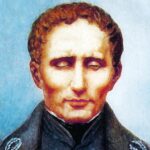 both eyes, resulting in total blindness. The “night writing” system on a raised 12-dot cell, two dots wide and six dots tall, didn’t work well, because while each dot or combination of dots within the cell represented a letter or a phonetic sound, the problem with the military code was that the human fingertip could not feel all the dots with one touch. When Braille refined it, it was very different, but it worked better, and that has become the well-known system we have today.
both eyes, resulting in total blindness. The “night writing” system on a raised 12-dot cell, two dots wide and six dots tall, didn’t work well, because while each dot or combination of dots within the cell represented a letter or a phonetic sound, the problem with the military code was that the human fingertip could not feel all the dots with one touch. When Braille refined it, it was very different, but it worked better, and that has become the well-known system we have today.
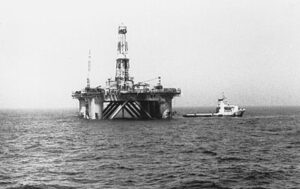 Over the years, we have gotten used to seeing offshore drilling rigs in the oceans surrounding our country, and other countries too, I’m sure. Generally, these rigs are safe places to work, but it’s hard to guarantee safety in some of the fierce storms that occur around the globe. Ocean Ranger was a semi-submersible mobile offshore drilling unit that was located 166 miles east of Saint John’s, Newfoundland. Ocean Ranger was designed and owned by Ocean Drilling and Exploration Company Inc (ODECO) of New Orleans. Ocean Ranger was actually a self-propelled large semi-submersible vessel, designed with a drilling facility and living quarters. It was capable of operation beneath 1,500 feet of ocean water and could drill to a maximum depth of 25,000 feet. At the time of its launch, it was described by ODECO as the world’s largest semi-submersible oil rig to date.
Over the years, we have gotten used to seeing offshore drilling rigs in the oceans surrounding our country, and other countries too, I’m sure. Generally, these rigs are safe places to work, but it’s hard to guarantee safety in some of the fierce storms that occur around the globe. Ocean Ranger was a semi-submersible mobile offshore drilling unit that was located 166 miles east of Saint John’s, Newfoundland. Ocean Ranger was designed and owned by Ocean Drilling and Exploration Company Inc (ODECO) of New Orleans. Ocean Ranger was actually a self-propelled large semi-submersible vessel, designed with a drilling facility and living quarters. It was capable of operation beneath 1,500 feet of ocean water and could drill to a maximum depth of 25,000 feet. At the time of its launch, it was described by ODECO as the world’s largest semi-submersible oil rig to date.
Ocean Ranger was constructed for ODECO in 1976 by Mitsubishi Heavy Industries in Hiroshima, Japan. It was 396 feet long, 262 feet wide, and 337 feet high. It had twelve 45,000-pound anchors. The weight was 25,000 tons. It was floating on two 400-foot-long pontoons that rested 79 feet below the surface. It was massive and very impressive, and it was approved for “unrestricted ocean operations.” Prior to moving to the Grand Banks area in November 1980, it had operated off the coasts of Alaska, New Jersey and Ireland.
On November 26, 1981, Ocean Ranger commenced drilling well J-34, its third well in the Hibernia Oil Field. Ocean Ranger was still working on this well in February 1982 when the incident occurred. Ocean Ranger was designed to withstand extremely harsh conditions at sea, including 100-knot winds and 110-foot waves, but the  storm off of Canada on February 14, 1982, would prove to be too much for it. Two other semi-submersible platforms were drilling nearby Ocean Ranger on that fateful day. Sedco 706 was 8.5 miles NNE, and Zapata Ugland was 19.2 miles N of Ocean Ranger. On February 14, 1982, the platforms received reports of an approaching storm linked to a major Atlantic cyclone from NORDCO Ltd, the company responsible for issuing offshore weather forecasts. There were protocols in place, and the crew began preparing for bad weather. They began hanging-off the drill pipe at the sub-sea wellhead and disconnecting the riser from the sub-sea blowout preventer. They worked hard, but due to surface difficulties and the speed at which the storm developed, the crew of Ocean Ranger were forced to shear the drill pipe after hanging-off, after which they disconnected the riser in the early evening.
storm off of Canada on February 14, 1982, would prove to be too much for it. Two other semi-submersible platforms were drilling nearby Ocean Ranger on that fateful day. Sedco 706 was 8.5 miles NNE, and Zapata Ugland was 19.2 miles N of Ocean Ranger. On February 14, 1982, the platforms received reports of an approaching storm linked to a major Atlantic cyclone from NORDCO Ltd, the company responsible for issuing offshore weather forecasts. There were protocols in place, and the crew began preparing for bad weather. They began hanging-off the drill pipe at the sub-sea wellhead and disconnecting the riser from the sub-sea blowout preventer. They worked hard, but due to surface difficulties and the speed at which the storm developed, the crew of Ocean Ranger were forced to shear the drill pipe after hanging-off, after which they disconnected the riser in the early evening.
A Mayday call was sent out from Ocean Ranger at 12:52am local time, on February 15th, noting a severe list to the port side of the rig and requesting immediate assistance. This was the first communication from Ocean Ranger identifying a major problem. The standby vessel, the M/V Sea-forth Highlander, was requested to come in close, because countermeasures against the 10–15-degree list weren’t working. The onshore MOCAN supervisor was notified of the situation, and the Canadian Forces and Mobil-operated helicopters were alerted just after 1:00 local time. The M/V Boltentor and the M/V Nordertor, the standby boats of Sedco 706 and Zapata Ugland respectively, were also dispatched to Ocean Ranger to provide assistance. Everything happened so fast, and at 1:30am local time, Ocean Ranger transmitted its last message: “There will be no further radio communications from Ocean Ranger. We are going to lifeboat stations.” Shortly thereafter, in the middle of the 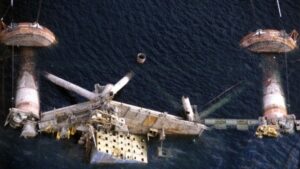 night and in the midst of that severe winter storm, the crew abandoned the platform. The platform remained afloat for another ninety minutes, sinking between 3:07am and 3:13am local time. All of Ocean Ranger sank beneath the Atlantic and by the next morning only a few buoys remained. Her entire crew of 84 workers…46 Mobil employees and 38 contractors from various service companies…were killed. There was evidence on at least one lifeboat launched with about 36 people onboard, but they didn’t survive either. Over the next week, 22 bodies were recovered from the North Atlantic. Autopsies indicated that those men had died as a result of drowning while in a hypothermic state.
night and in the midst of that severe winter storm, the crew abandoned the platform. The platform remained afloat for another ninety minutes, sinking between 3:07am and 3:13am local time. All of Ocean Ranger sank beneath the Atlantic and by the next morning only a few buoys remained. Her entire crew of 84 workers…46 Mobil employees and 38 contractors from various service companies…were killed. There was evidence on at least one lifeboat launched with about 36 people onboard, but they didn’t survive either. Over the next week, 22 bodies were recovered from the North Atlantic. Autopsies indicated that those men had died as a result of drowning while in a hypothermic state.
 In the midst of a time when so many people are offended, angry, and tired of so many restrictions, comes a day when we can all take our minds off of the negative stuff going on and focus on something good…love. Over the past two years, we have been bombarded with lock downs, riots, protests, and a general show of hate. It has been a trying time for all of us. We need more love in our lives. Love doesn’t just apply to romantic love, but anyone can be your valentine…friends, children, and parents too. In fact, I can’t think of a more important time in history to celebrate love.
In the midst of a time when so many people are offended, angry, and tired of so many restrictions, comes a day when we can all take our minds off of the negative stuff going on and focus on something good…love. Over the past two years, we have been bombarded with lock downs, riots, protests, and a general show of hate. It has been a trying time for all of us. We need more love in our lives. Love doesn’t just apply to romantic love, but anyone can be your valentine…friends, children, and parents too. In fact, I can’t think of a more important time in history to celebrate love.

While romantic love is traditionally the big reason for Valentine’s Day, and I love the special times and traditions with my husband, Bob, I think I find that the traditions that are the most fun are ones that surround the little kids. Little ones live to receive candy and gifts. They don’t care how much you sent or what they receive, they just love the show of love you are giving them. I’ve seen kids get a dollar box of candy or a chocolate rose, and they are totally happy. Younger kids even love getting something like chocolate pudding or applesauce. They don’t really care what it is…kids just like gifts, and for me it’s fun to watch their little faces light up.

However, Valentine’s Day is celebrated, the point of the holiday is to let your loved ones know that you love and appreciate them. Of course, every day is a great day to tell your loved ones how much you love them, but I think it’s nice to make a special effort once in a while, because it’s just as easy to take our loved ones for granted, and before we know it, they feel a little bit unloved. Of course, we should never let that happen. In fact, maybe every day should be Valentine’s Day, because after all, our loved ones are always our Valentines, aren’t they. Happy Valentine’s Day everyone!!
 Switzerland has long been a neutral nation when it comes to wars other conflicts. That hasn’t always been an easy status to accomplish. According to the Hague Convention of 1907, a neutral country means that the country has declared nonparticipation during a war and cannot be counted on to help fight a belligerent country. “Non-belligerent” countries are ones that offer non-combative support in times of war. Countries interpret neutrality differently. Switzerland has what would be called armed neutrality in global affairs. Switzerland is not alone in that status, since Ireland, Austria, and Costa Rica all take similar non-interventionist stances, but Switzerland remains the oldest and most respected.
Switzerland has long been a neutral nation when it comes to wars other conflicts. That hasn’t always been an easy status to accomplish. According to the Hague Convention of 1907, a neutral country means that the country has declared nonparticipation during a war and cannot be counted on to help fight a belligerent country. “Non-belligerent” countries are ones that offer non-combative support in times of war. Countries interpret neutrality differently. Switzerland has what would be called armed neutrality in global affairs. Switzerland is not alone in that status, since Ireland, Austria, and Costa Rica all take similar non-interventionist stances, but Switzerland remains the oldest and most respected.
The desired neutrality in Switzerland started back in 1515, when the Swiss Confederacy suffered a devastating loss to the French at the Battle of Marignano. Apparently, they really lost their taste for war following the defeat, because the Confederacy completely abandoned its expansionist policies and did everything in their power to avoid any future conflict in the interest of self-preservation. No one likes a war, but I don’t think that many nations detest it so much that they would go to such extremes. While the Battle of Marignano began the desire for neutrality, it was the Napoleonic Wars, that truly sealed Switzerland’s place as a neutral nation. Switzerland was invaded by France in 1798 and later made a satellite of Napoleon Bonaparte’s empire, forcing it to compromise its neutrality. With Napoleon’s defeat at Waterloo, the major European powers decided that a neutral Switzerland might actually be a good thing. Given the volatility of the area they decided that Switzerland would serve as a valuable buffer zone between France and Austria and contribute to stability in the region. I’m not sure how they figured that, considering the fact that they would not fight. Nevertheless, during 1815’s Congress of Vienna, they signed a declaration affirming Switzerland’s “perpetual neutrality” within the international community. Switzerland had what it wanted, as did the international community.
Attaining neutrality and keeping it can be two very different things. Nevertheless, Switzerland maintained its impartial stance through World War I, when it mobilized its army and accepted refugees, also still refusing to take sides militarily. The newly formed League of Nations officially recognized Swiss neutrality and established its headquarters in Geneva in 1920. World War II presented a more significant challenge to Swiss neutrality, when the country found itself encircled by the Axis powers. For a country that no longer had a desire to fight, this was a big problem. Switzerland was able, with threats of retaliation, to maintain its independence. Switzerland also continued to trade with Nazi Germany, a decision that later proved controversial after the war ended, and one they most likely regretted.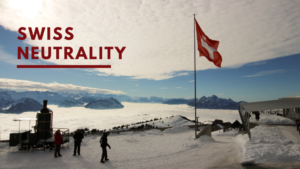
Switzerland has taken a more active role in international affairs by aiding with humanitarian initiatives since World War II, but it fiercely maintains its neutral status with regard to military affairs. Switzerland has never joined the North Atlantic Treaty Organization (NATO) or the European Union, and only joined the United Nations in 2002. Despite its longstanding neutrality, the country still maintains an army for defense purposes and requires part-time military service from all males between the ages of 18 and 34. It always best to be prepared…just in case.
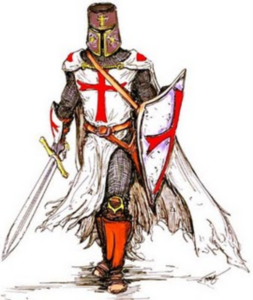 The word knight always makes me think of medieval men in full armor fighting with shields and swords, and maybe that isn’t so far off with the Knights Templar. One thing I didn’t connect to the knights, was Christianity, but maybe I should have. The medieval knights are a little outside my wheelhouse, but I have had an interest in them for a while now, and the Knights Templar are at the top of my list. So, I decided to have a look at exactly what they are, beginning with the Knights Templar.
The word knight always makes me think of medieval men in full armor fighting with shields and swords, and maybe that isn’t so far off with the Knights Templar. One thing I didn’t connect to the knights, was Christianity, but maybe I should have. The medieval knights are a little outside my wheelhouse, but I have had an interest in them for a while now, and the Knights Templar are at the top of my list. So, I decided to have a look at exactly what they are, beginning with the Knights Templar.
After Christian armies captured Jerusalem from Muslim control in 1099 during the Crusades, groups of pilgrims from across Western Europe started visiting the Holy Land. As they traveled, many of them were robbed and killed crossing through Muslim-controlled territories during their journey. A French knight named Hugues de Payens created a military order along with eight relatives and acquaintances, calling it the Poor Fellow-Soldiers of Christ and the Temple of Solomon. Later known simply as the Knights Templar (Knights of the Temple), it was founded in 1118 in Jerusalem, and was a large organization of devout Christians who carried out an important mission: to protect European travelers visiting sites in the Holy Land. The first headquarters of the Knights Templar was located on the site of the Temple of Solomon, and it was to this temple that the organization was dedicated and where it got its name.
Initially, the Knights Templar faced criticism from some religious leaders. There are always those who think the church and any kind of government or military group should not mix, but in 1129, the group received the formal endorsement of the Catholic Church and support from Bernard of Clairvaux, a prominent French abbot. Bernard authored “In Praise of the New Knighthood,” a text that supported the Knights Templar and bolstered their growth. In 1139, Pope Innocent II issued a Papal Bull that allowed the Knights Templar special rights. Among them, the Templars were exempt from paying taxes, permitted to build their own oratories and were held to no one’s authority except the Pope’s.
The Knights Templar quickly set up a network of banks and gained enormous financial influence, with an ability to quickly fund their work. Their banking system allowed religious pilgrims to deposit assets in their home countries and withdraw funds in the Holy Land. The order became known for its austere code of conduct (which included no pointy shoes and no kissing their mothers, rules outlined in “The Rule of the Templars”) and signature style of dress, which featured a white habit emblazoned with a simple red cross. Members swore an oath of poverty, chastity and obedience. They weren’t allowed to drink, gamble or swear. Prayer was essential to their daily life, and the Templars expressed particular adoration for the Virgin Mary.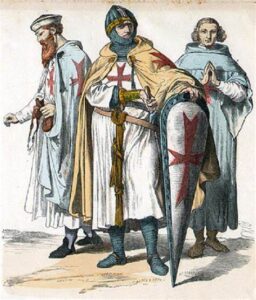
New chapters of the Knights Templar were established throughout Western Europe as the group grew in size and status. At the height of their influence, the Templars had a sizable fleet of ships, and they owned the Mediterranean island of Cyprus. They served as a primary bank and lending institution to European monarchs and nobles. Though its original purpose was to protect Christiam pilgrims from danger, the Knights Templar later expanded its duties. They became defenders of the Crusader states in the Holy Land and were known as brave, highly skilled warriors. The group developed a reputation as fierce fighters during the Crusades. They were driven by religious zeal and forbidden from retreating unless significantly outnumbered, and I doubt if they would even then. The Templars built numerous castles. They fought, and often won, battles against Islamic armies. Their fearless style of fighting became a model for other military orders. They were quite the group.
 When I think of an island, exotic animals and birds everywhere. I might also think of snakes and other predators in the forests. It occurs to me that these things were not native to the area but were rather brought in by some ship. It makes perfect sense, because there is just no way these animals could migrate to an island. Still, there are animals on islands, like the Hawaiian Islands…in fact there are cattle herds on the Hawaiian Islands and a ranch called TIL Ranching. Maybe that shouldn’t surprise me, but it did.
When I think of an island, exotic animals and birds everywhere. I might also think of snakes and other predators in the forests. It occurs to me that these things were not native to the area but were rather brought in by some ship. It makes perfect sense, because there is just no way these animals could migrate to an island. Still, there are animals on islands, like the Hawaiian Islands…in fact there are cattle herds on the Hawaiian Islands and a ranch called TIL Ranching. Maybe that shouldn’t surprise me, but it did.
TIL Ranching was started when Captain George Vancouver brought cattle to the islands that were under the rule of King Pai’ea Kamehameha. I’m sure most people would think of Vancouver, Canada. Of course, it was named after Captain George Vancouver, a British naval officer, but that is not the only thing he ever did. In 1793, Vancouver gave King Kamehameha five cows from California. He followed that gift with the addition of bull calves. All of these gifts were presented in hopes of cultivating cattle on the Hawaiian Islands. Longhorn cattle from Mexico arrived soon after, and Kamehameha issued Kapu to protect the animals. Kapu refers to the ancient Hawaiian code of conduct of laws and regulations. The Kapu system was universal in lifestyle, gender roles, politics, religion, etc. An offense that was Kapu was often a corporal offense, but also often denoted a threat to spiritual power, or theft of mana. Kapus were strictly enforced. In this case, the Kapu was that the cattle were not to be killed for food. The  reason was that if the herd was going to thrive, they would need a few years without being butchered, so the herd could grow. When you think about it, that was an amazing gift.
reason was that if the herd was going to thrive, they would need a few years without being butchered, so the herd could grow. When you think about it, that was an amazing gift.
Over the next few decades, there were cattle throughout the Hawaiian Islands. When the herds began to flourish, the Kapu was lifted, and products from the animals became important resources for islanders. When John Palmer Parker married the king’s granddaughter in 1816, he benefited from the increase of cattle, by receiving land and exclusive hunting rights from King Kamehameha. By the 1860s, the cattle were fully domestication and formal ranching was widespread. It’s amazing that from a couple of small gifts, a whole new industry was born.

 My youngest sister, Allyn Hadlock has always been a gentle soul. From the time she was just a little girl, she had a heart that always remained soft. The rest of my sisters and I always said that Allyn was “always good.” She didn’t get into mischief, like the rest of us might have. I could never figure out how she did that, probably because I had a mischievous side, and did get into a few scrapes I life…oh nothing serious, but enough to not be the sister who was “always good.”
My youngest sister, Allyn Hadlock has always been a gentle soul. From the time she was just a little girl, she had a heart that always remained soft. The rest of my sisters and I always said that Allyn was “always good.” She didn’t get into mischief, like the rest of us might have. I could never figure out how she did that, probably because I had a mischievous side, and did get into a few scrapes I life…oh nothing serious, but enough to not be the sister who was “always good.”
Over the past couple of years, many people have been seeking the Lord concerning all that is going on around us. My sisters and I are no different, and we, having been raised to know the Lord, find ourselves pressing into Him in these times. My niece, Jessi Sawdon was telling me about my sister’s mothering ways with her children, and I can tell you firsthand…our parents are very proud of her. Jessi says, “One of the things I love most about my mom is her ability to always seek the Lord first. She’s instilled that in us kids and I can see all of us following this same path. And that’s exciting. Like the rest of our family, she had a strong faith, but dang, when times are tough, she is the first one there to help us make the right confessions and remind us of what the Lord has promised us. She makes everything look effortless, even though I know it’s not. She used to tell us to let Gods light shine through us. It will make everyone wonder what we’ve got, and they’ll want it too. She does that every day. I don’t think there is a better gift than her (even though it’s her birthday), and I feel so blessed that she has been such a strong spiritual leader in all our lives and has never wavered.” Allyn’s second daughter, Lindsay Moore agrees with Jessi, as do her son, Ryan Hadlock and youngest daughter, Kellie Hadlock, that Allyn has grown in her walkwith the Lord, and well as in her work and home life. There is no greater tribute than that, if you ask me.
Of course, one of Allyn’s most precious roles, these days, is that of Grammy. Grandchildren are one of the  greatest gifts your kids can ever give you, and Allyn has embraced the title of Grammy with joy and happiness. She has four grandchildren on Earth, and two waiting for her when she gets to Heaven. All are loved and are an amazing blessing to Allyn, and to my brother-in-law, Chris Hadlock. They so enjoy the time they get to spend with those precious kids…which as any grandparent knows, is never long enough. You always want more time, especially when the grandchildren live in a different city. Thankfully, for Allyn and Chris, they two that live in different cities, are still in Wyoming, so visits are more frequent than if they lived in a different state. This way, they visit often, and Allyn loves that. Today is Allyn’s birthday. Happy birthday Allyn!! Have a great day!! We love you!!
greatest gifts your kids can ever give you, and Allyn has embraced the title of Grammy with joy and happiness. She has four grandchildren on Earth, and two waiting for her when she gets to Heaven. All are loved and are an amazing blessing to Allyn, and to my brother-in-law, Chris Hadlock. They so enjoy the time they get to spend with those precious kids…which as any grandparent knows, is never long enough. You always want more time, especially when the grandchildren live in a different city. Thankfully, for Allyn and Chris, they two that live in different cities, are still in Wyoming, so visits are more frequent than if they lived in a different state. This way, they visit often, and Allyn loves that. Today is Allyn’s birthday. Happy birthday Allyn!! Have a great day!! We love you!!

 My grandnephew, Jake Harman is totally a character. To call him a goofball is an understatement. Jake and his wife, Melanie have three children…Alice, Izabella, and Jaxx. I rather think that Melanie has four children, however, because as anyone who knows Jake will tell you…he is just a big kid!! When it comes to rough housing, Jake is the ringleader, and all the kids follow suit. It may look to the outsider, like Jake is attacking his kids, and that they are terrified of him, but don’t you believe it, because they know that their daddy is a big teddy bear. I truly don’t think I have ever seen Jake happier than when he is with his family. He is a great husband and dad. He is blessed with a wonderful family, and they are blessed with him.
My grandnephew, Jake Harman is totally a character. To call him a goofball is an understatement. Jake and his wife, Melanie have three children…Alice, Izabella, and Jaxx. I rather think that Melanie has four children, however, because as anyone who knows Jake will tell you…he is just a big kid!! When it comes to rough housing, Jake is the ringleader, and all the kids follow suit. It may look to the outsider, like Jake is attacking his kids, and that they are terrified of him, but don’t you believe it, because they know that their daddy is a big teddy bear. I truly don’t think I have ever seen Jake happier than when he is with his family. He is a great husband and dad. He is blessed with a wonderful family, and they are blessed with him.
Jake has been a transit bus driver for the City of Casper for a while now and loves his job. Jake is the kind of guy who likes to stay busy. He doesn’t really like sitting still. and that’s a good thing, because while he sits driving the bus, he is always going from place to place. Jake is, first and foremost, a Christian, and while he can’t bring it up, he is able to spread the word of Jesus (when a customer brings it up) and he absolutely loves being able to talk about Christ with others.
Jake and Melanie participate in an organization called Christ-Like Neighbors, in which they go help out anyone in need in any way they we can. Sometimes it’s snow removal or lawn mowing. Other times its cleaning or 

 grocery shopping. These are people who really don’t have the ability to do the work that they need to have done, so they really appreciate what the Christ-Like Neighbors does for them. Jake and Melanie have a heart for those in need, and I think it is so wonderful of them. Of course, like most volunteers, Jake and Melanie feel that their reward is the smiling faces of those they have helped. Today is Jake’s birthday. Happy birthday Jake!! Have a geat day!! We love you!!
grocery shopping. These are people who really don’t have the ability to do the work that they need to have done, so they really appreciate what the Christ-Like Neighbors does for them. Jake and Melanie have a heart for those in need, and I think it is so wonderful of them. Of course, like most volunteers, Jake and Melanie feel that their reward is the smiling faces of those they have helped. Today is Jake’s birthday. Happy birthday Jake!! Have a geat day!! We love you!!
 Amazingly, the islands of the world have held an importance during wartime, that most of us would never have dreamed. These seemingly insignificant places proved to be great staging places time and again, and so became places that were fought over viciously. The Solomon Islands were among those places fought over during World War II…most specifically Guadalcanal. The island of Guadalcanal is the largest of the Solomons Islands, which is in the South Pacific Ocean, located northeast of Australia. The Solomon Islands are a group of 992 islands and atolls, 347 of which are inhabited. The Solomons have 87 Indigenous languages. They were first discovered in 1568 by Spanish navigator Alvaro de Mendana de Neyra (1541-95). By 1893, the British had annexed Guadalcanal, along with the other central and southern Solomons, which made sense, since they also owned Australia. In 1885, the Germans took control of the northern Solomons, but transferred these islands, except for Bougainville and Buka (which eventually went to the Australians) to the British in 1900. So, the Solomon Islands have been transferred around some over the centuries, as most countries have been, a time or two anyway.
Amazingly, the islands of the world have held an importance during wartime, that most of us would never have dreamed. These seemingly insignificant places proved to be great staging places time and again, and so became places that were fought over viciously. The Solomon Islands were among those places fought over during World War II…most specifically Guadalcanal. The island of Guadalcanal is the largest of the Solomons Islands, which is in the South Pacific Ocean, located northeast of Australia. The Solomon Islands are a group of 992 islands and atolls, 347 of which are inhabited. The Solomons have 87 Indigenous languages. They were first discovered in 1568 by Spanish navigator Alvaro de Mendana de Neyra (1541-95). By 1893, the British had annexed Guadalcanal, along with the other central and southern Solomons, which made sense, since they also owned Australia. In 1885, the Germans took control of the northern Solomons, but transferred these islands, except for Bougainville and Buka (which eventually went to the Australians) to the British in 1900. So, the Solomon Islands have been transferred around some over the centuries, as most countries have been, a time or two anyway.
During World War II, Guadalcanal became a hard-fought-over island, with the Japanese in control in early 1943. Then, on February 8, 1943, Japanese troops evacuate Guadalcanal, leaving the island in Allied possession after a prolonged campaign. When Japan lost Guadalcanal, it paved the way for other Allied wins in the Solomon Islands.
The Japanese had invaded the Solomon Islands in 1942 during World War II and immediately began building a strategic airfield on Guadalcanal. On August 7, 1942, US Marines landed on the island, signaling the Allies’ first major offensive against Japanese-held positions in the Pacific. The Japanese response to the US Marines “boots on the ground” was to quickly launch sea and air attacks. The battles that followed were bloody and made even more miserable in the debilitating tropical heat. Nevertheless, the Marines fought hard with Japanese troops on land, and in the waters surrounding Guadalcanal, the US Navy fought six major engagements with the Japanese between August 24 and November 30. In mid-November 1942, the five Sullivan brothers from Waterloo, Iowa, died together when the Japanese sank their ship, the USS Juneau. These days they try not to put brother together in battle, but the Sullivan brothers had requested it, and so it was granted.
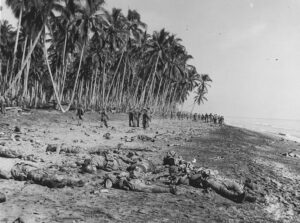
Both the United States and the Japanese suffered heavy losses of men, warships, and planes in the battle for Guadalcanal. It is estimated 1,600 US troops were killed and over 4,000 were wounded. Several thousand more died from disease. The Japanese lost 24,000 soldiers. Finally, on December 31, 1942, Emperor Hirohito told his troops they could withdraw from the area. About five weeks later, the Americans secured Guadalcanal. American authorities declared Guadalcanal secure on February 9, 1943. After the war, American and Japanese groups have repeatedly visited Guadalcanal to search for remains of missing soldiers. Some 7,000 Japanese remain missing on the island, and islanders still bring the Japanese groups bones that the islanders say are those of unearthed Japanese soldiers.

